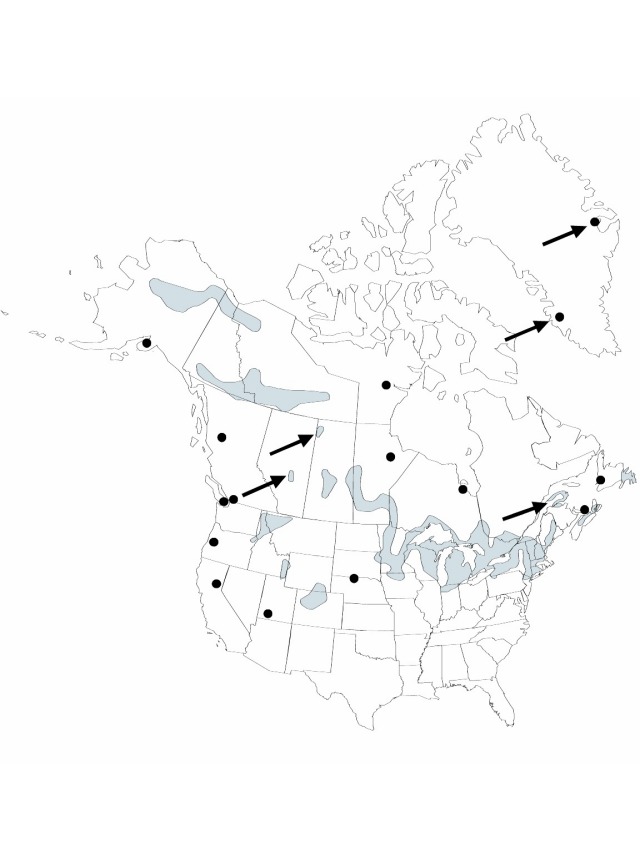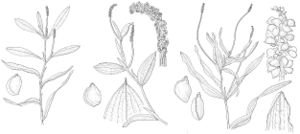Potamogeton praelongus
Arch. Bot. (Leipzig) 3: 331. 1805.
Rhizome present. Cauline stems terete, without spots, to 210 cm; nodal glands absent. Turions absent. Leaves submersed, ± spirally arranged, sessile, lax; stipules persistent, conspicuous, convolute, free from blade, white to green, not ligulate, 3–8.1 cm, fibrous, shredding at apex; blade pale green, rarely olive green, linear-lanceolate, not arcuate, 0.8–2.8 cm × 11–46 mm, base clasping, without basal lobes, margins entire, rarely crispate, apex hoodlike, splitting when pressed, obtuse, lacunae absent; veins 11–33. Inflorescences emersed, unbranched; peduncles not dimorphic, terminal or axillary, erect to spreading, cylindric, 9.5–53 cm; spikes not dimorphic, cylindric, 34–75 mm. Fruits sessile, greenish brown, obovoid, turgid, abaxially keeled, occasionally laterally keeled, 4–5.7 × 3.2–4 mm, lateral keels when present without points; beak erect, 0.6–1 mm; sides without basal tubercles; embryo with 1 full spiral. 2n = 52.
Phenology: Flowering summer–fall.
Habitat: Neutral to alkaline waters of lakes, rivers, and streams
Elevation: Greenland; 100–3000 m
Distribution

Greenland, Alta., B.C., Man., N.B., Nfld. and Labr. (Nfld.), N.W.T., N.S., Nunavut, Ont., P.E.I., Que., Sask., Yukon, Alaska, Calif., Colo., Conn., Idaho, Ind., Iowa, Maine, Mass., Mich., Minn., Mont., Nebr., N.H., N.J., N.Y., Oreg., Pa., S.Dak., Utah, Vt., Wis., Wyo., Mexico, Eurasia.
Discussion
Potamogeton praelongus is one of the easiest pondweeds to identify with its submersed leaves only clasping the more or less zigzagged stem. The persistent, hugelarge, white stipules provide another clue to this species.
Four hybrids, Potamogeton perfoliatus × P. praelongus (= P. × cognatus Ascherson & Graebner), P. alpinus × P. praelongus (= P. × griffithii A. Bennett), P. crispus × P. praelongus (= P. × undulatus Wolfgang ex Schultes & Schultes f.), and P. gramineus × P. praelongus (= P. × vilnensis Galinus), have been described.
Selected References
None.
